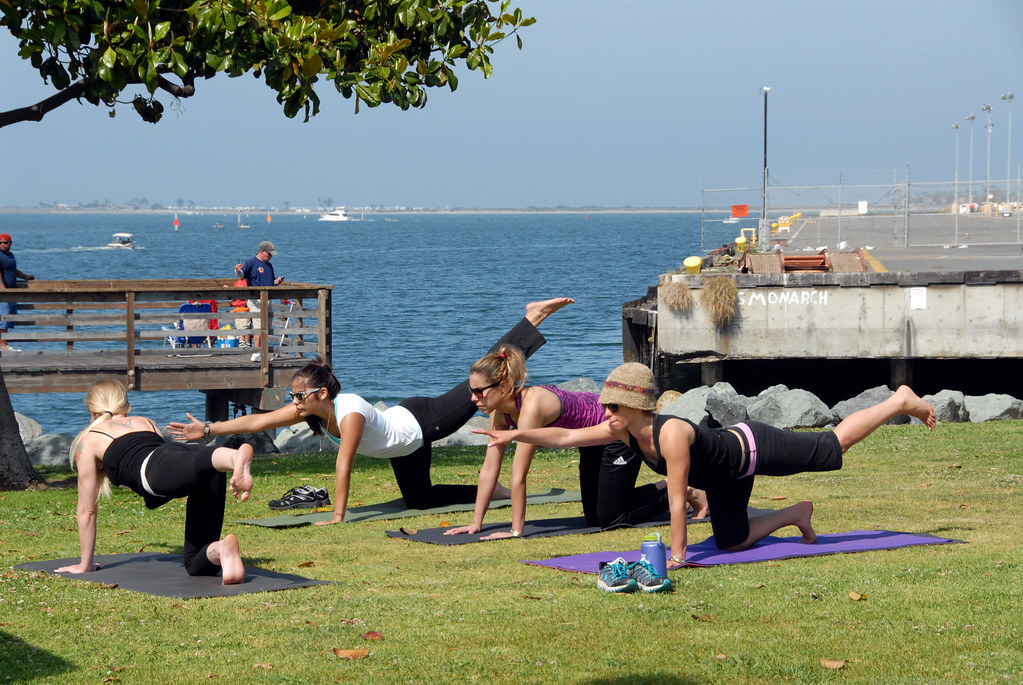Death to Bootcamps

Doesn’t the name make you feel hardcore?
Bootcamp
Ya I said it…
One to five times a week, wouldn’t you look forward to getting up to meet with 25 other people on the dew covered grass to pump out squats and push-ups.
Your breath, huffing and puffing little clouds of moisture, while echos of shouting off in the distance ring in your ears.
Sound like your cup of tea?
If you feel like you lack motivation, need a group to help you out, need to commit to something, and already know how to sustain an active lifestyle, these are a great and fun way to mix things up.
The majority of the time bootcamps are built for experienced to advanced exercisers.
Side Note: Same thing goes for Insanity and P90x, as I’ve fielded questions about them in the last year or two…
The Problem
This is what I often see on my way to the gym in the morning, in the spring, summer and fall:
1) People with very low levels of physical fitness, getting %@#&kicked by a Drill-Sergeant-like instructor.
2) People executing some or most exercises so incorrectly, no wonder they drop out by the 3rd week due to ‘knee pain.’
3) People just flat out struggling, and from my point of view, hating every minute.
Bootcamps do bring people together, which is a good thing. I’ve talked about the importance of social support before…
You may even get lucky with a good, patient, knowledgeable instructor, I don’t mean to generalize but at the same time, it’s hard not to.
People in the fitness industry loved bootcamps for a long time — they are thankfully not nearly as popular as they used to be from what I can tell — because you could train 20-50 people with very little overhead in an outdoor space.
Small amounts of equipment, set up some circuits, get people moving and you could easily walk away with $150-400 an hour.
These are much the same reasons I have a beef with circuit training, in case you missed that article.
If you were an instructor, that kind of money has a good amount of appeal, right?
Relax though, I don’t think it’s all bad, I’m sure many of them are thinking, “hey, I can help a lot more people this way than one-on-one.”
The money may just be a bonus that equals a win-win situation.
For the most part, I do believe that good fitness professionals are worth more than the average charges, but a staggering difference in quality from one fitness pro to another, makes the industry so inconsistent, I can understand why the public is generally reluctant to pursue fitness training.
As another side note: the average personal trainer works less than 30 total hours a week, actually training people, and makes about $28,000 in the U.S. just in case you thought $150 an hour was a little over-the top…
As a result of the bootcamp movement though, everyone, their brothers and sisters, then their moms started putting on bootcamps to really dilute the market and obviously the draw per class dropped.
And because the fitness industry isn’t really regulated, generally speaking a lot of sub-par bootcamps end up on the market too.
None of this particularly bothers me, as I believe the important thing to remember here is context.
If you’re fit, want to stay fit, move well, need minimal coaching and want a cheap solution of accountability, — $10-25 a session often — then a bootcamp might be a fine option for you.
What does bother me, is from my own personal experience, many people lack good movement skills for such an endeavor.
I encourage you to learn how to exercise effectively first.
Give someone a fish, feed them for a day. Teach a someone to fish, feed them for a lifetime, right?
Sadly, an overwhelming percentage of our population doesn’t really move much any more, so acquiring good movement skills should be a priority for most in their exercise pursuits.
Enrolling in a poorly organized or structured class like this can hurt even more.
What a Bootcamp Should Be
An all or several day intensive process where you learn a ton, are assessed and go through more than just exercise.
Ideally workshops, seminars, or lectures are a part of this and include topics in nutrition, movement and mindset training.
And soon coaches will be able to use a tool like Koachable.
There should be a distinct beginning and end.
I like to work in minimum three months chunks, optimal is six months.
28 day challenges, 30 day challenges are good for experienced or advanced exercises, but otherwise encourage short-cuts, quick fixes and other bad habits in the majority.
For a bootcamp specific example, the U.S. Marines do 13-20 weeks of intensive training, and that’s before any specialization they may go through.
3-4 months of all day, every day training to even be “proficient” as a soldier.
The typical person spends 3-4 years in university, just to become proficient in a subject too.
Now I’m not saying you should quit your job and spend 13 weeks learning to exercise effectively, but a weekend event, several weekend events, or some kind of week-long immersed retreat would be a far better resemblance to a true ‘bootcamp,’ right?
After-all, what about learning to eat well, or maintaining an optimal mindset? There is more to fitness than just exercising.
What to Avoid
1) Classes or Bootcamps with no end date.
In these environments you are expected to just jump in with an existing group and hopefully stay the course.
Remember this: Work + Rest = Success
2) Classes or Bootcamps where there is no kind of qualitative or quantitative assessment at the beginning and end.
There is a saying in business, what gets measured, gets managed. Weight in my opinion is not enough, pictures are better.
3) Classes or Bootcamps where there is no emphasis on learning good movement and execution of the exercises well.
In my opinion, instructors that stop a class to explain a concept, are offering a better product.
4) High Class numbers.
The optimal number of people in a class in my experience is 12-15 people or less, per coach, particularly when dealing with those new to exercise.
If you enroll in something bigger, I think the best classes use multiple coaches.
